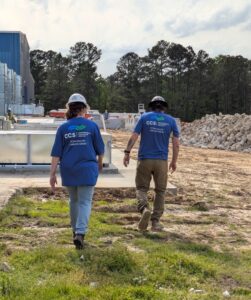Lean Farming: Transport

Excessive and Inefficient Transport
“Too Much Movement, Not Enough Growing”
Streamlining Transport in Lean Farming
Transport plays a critical role in lean farming. When managed poorly, it introduces waste and disrupts efficiency. Unnecessary movement of materials, plants, or products adds time and increases risk without adding value. Every step in the transport process must serve a purpose.
In lean farming, adding value to the end customer is the ultimate goal. Transport that doesn’t contribute to this goal becomes a liability. Long travel between cultivation rooms slows workflow and can damage plants. Your plants may degrade in quality, reducing overall yield or supplying your customers with an inferior product.

During inefficient transportation of crops, cross-contamination can occur very easily. This risk compromises product integrity and can lead to costly losses. Farms must design transport systems that protect product quality while maintaining speed and consistency.
Waiting is another consequence of poor transport planning. When employees or products wait for movement, productivity drops. These delays ripple through operations, creating bottlenecks and frustration.
To solve this, farms should implement a linear flow. Materials and plants should move in one direction, from start to finish, without unnecessary detours. This approach minimizes back-and-forth movements by employees and reduces confusion.
Cost-effective transport solutions don’t require expensive equipment. Simple changes—like reorganizing workspaces or using carts designed for plant safety—can make a big impact. The goal is to move items quickly, safely, and with minimal handling.
“Water Spiders”
Designating a dedicated support operator or team who circulates your facility on a fixed route in cadence. This “Water Spider” delivers fresh materials, collects unfinished work, resets work stations, while also prepping harvest employees for production and cultivation.
Tracking “touch points” is another useful implementation that can increase overall productivity and begin to add more quality to your consumer product. How often does your product get handled at different stages from veg to harvest, and through to packaging? If your product is moving through 17 different touch points, you should reevaluate your process and minimize movement.
Ask yourself, does this add quality to your consumer product? Adjust your transport sequence and see if you can minimize it to only 7 touch points!
Cross-functional collaboration helps identify transport inefficiencies. Employees who handle plants daily often know the best ways to move them. Listening to their input leads to smarter layouts and better workflows.
1. Optimize Facility Layout
- Reduce long travel distances between cultivation rooms and workstations.
-
Design a linear flow from propagation to harvest to packaging.
2. Use Specialized Transport Equipment
- Invest in carts and trays designed to protect plants during movement.
- Use wheeled racks for smoother, safer transport of harvested flower.
3. Implement Standard Operating Procedures (SOPs)
- Create clear SOPs for moving plants, tools, and products.
- Train staff to follow consistent transport routes and handling methods.
- Remember the five “S’s” and apply them to your transport methods
4. Schedule Transport Strategically
- Move plants during low-traffic times to avoid congestion.
- Coordinate transport with workflow stages to minimize waiting.

5. Cross-Train Employees
Train staff in multiple roles to reduce delays caused by waiting for specific personnel.
Encourage flexibility in task execution to keep transport flowing.
6. Minimize Back-and-Forth Movement
- Organize tools and materials near workstations and standardize their locations by enforcing a designated home for each tool.
- Use visual cues and signage to guide efficient movement paths.
7. Monitor and Audit Transport Processes
- Track transport times and identify bottlenecks.
- Use employee feedback to refine routes and methods.
8. Prevent Cross-Contamination
- Separate clean and dirty zones with physical barriers.
- Use color-coded containers and equipment for different crop stages.
9. Digitize Tracking
- Use barcodes or RFID tags to monitor plant movement.
- Integrate transport data into cultivation software for real-time insights.
10. Encourage Staff Input
- Hold regular meetings to gather transport improvement ideas.
- Recognize and implement suggestions that enhance efficiency.
Lean farming demands constant evaluation. Transport systems must evolve with the facility’s needs. Regular audits and feedback loops ensure that movement stays efficient and purposeful.
In conclusion, transport in lean farming must be intentional. Every movement should add value, protect quality, and support a smooth workflow. By streamlining transport, farms reduce waste, improve productivity, and deliver better products to customers.